Oral Microbial Diversity Formed and Maintained through Decomposition Product Feedback Regulation and Delayed Responses
- PMID: 33688360
- PMCID: PMC7914081
- DOI: 10.1155/2021/5590110
Oral Microbial Diversity Formed and Maintained through Decomposition Product Feedback Regulation and Delayed Responses
Abstract
Oral microbial diversity plays an important role on oral health maintenance. However, there are only few kinds of substrates available for the microbial flora in oral cavity, and it still remains unclear why oral microbial diversity can be formed and sustained without obvious competitive exclusion. Based on experimental phenomena and data, a new hypothesis was proposed, namely, the decomposition product negative feedback regulation on microbial population size and microbial delay responses including reproductive, reaction, interspecific competition, and substrate decomposition delay responses induced by oral immunity. According to hypothesis and its cellular automata (CA) model, the CA simulation results sufficiently proved that the decomposition product negative feedback regulation and four microbial delay responses could significantly alleviate the interspecific competitions and inhibit the emergence of dominant species, causing the formation and sustenance of oral microbial diversity. This study could also offer effective guidance of prevention and treatment of oral cavity diseases.
Copyright © 2021 Chen Dong et al.
Conflict of interest statement
The authors declare no conflicts of interest in this article.
Figures


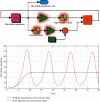
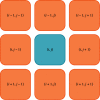
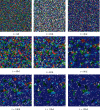
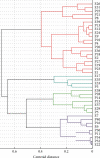
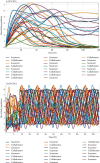

Similar articles
-
Microbial diversity formation and maintenance due to temporal niche differentiation caused by low-dose ionizing radiation in oligotrophic environments.Life Sci Space Res (Amst). 2021 Nov;31:92-100. doi: 10.1016/j.lssr.2021.08.003. Epub 2021 Aug 28. Life Sci Space Res (Amst). 2021. PMID: 34689955
-
Formation Mechanism of Microbial Diversity in Artificial Intelligence Devices due to Intermediate Disturbance by Low-Dose UV Radiation for Complementary Medicine.Evid Based Complement Alternat Med. 2022 Sep 9;2022:2874835. doi: 10.1155/2022/2874835. eCollection 2022. Evid Based Complement Alternat Med. 2022. PMID: 36118090 Free PMC article.
-
Using experimental manipulation to assess the roles of leaf litter in the functioning of forest ecosystems.Biol Rev Camb Philos Soc. 2006 Feb;81(1):1-31. doi: 10.1017/S1464793105006846. Biol Rev Camb Philos Soc. 2006. PMID: 16460580 Review.
-
Enhanced decomposition of stable soil organic carbon and microbial catabolic potentials by long-term field warming.Glob Chang Biol. 2017 Nov;23(11):4765-4776. doi: 10.1111/gcb.13755. Epub 2017 Jun 9. Glob Chang Biol. 2017. PMID: 28597589
-
Functional diversity of terrestrial microbial decomposers and their substrates.C R Biol. 2011 May;334(5-6):393-402. doi: 10.1016/j.crvi.2011.03.001. Epub 2011 May 4. C R Biol. 2011. PMID: 21640948 Review.
References
-
- Dunn A. J. Nervous and Immune System Interactions Encyclopedia of Life Sciences. Chichester, UK: John Wiley & Sons; 2005. - DOI
LinkOut - more resources
Full Text Sources
Other Literature Sources

